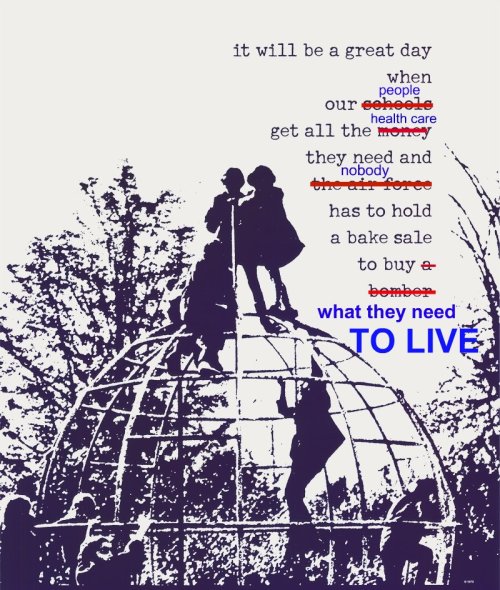Last week I attended a meeting at my university campus regarding sustainable transportation options for the next five to ten years. We’re at an interesting point in time here, as both the transit routes and the university are putting in long-term planning, so we may have a chance to push for real, useful, interesting change that can have long-term impact on both the university community and the greater community.
I would say “Ask me what wasn’t covered at all!” but I’m sure you can all guess – accessibility was never mentioned, even though the initial study into the needs of students, faculty and staff on campus had raised issues of accessibility.
But! Credit where credit is due. I brought this up at the meeting, and then again (as in, ten minutes later) with head of my particular branch of student government, and this afternoon attended a meeting including myself, the president of my particular branch of the student union, and student accessibility services to talk about concerns regarding accessible transport and sustainable transport.
Basically, the topics of conversation were around the fact that we’re a growing campus, we have greater needs regarding getting people to and from campus every day, but we want those needs to be Green in focus. The initial meeting I attended last week focused on things like faculty bus passes, incentives to car pool, and what encourages people to walk or bike to campus.
What we talked about today were more focused ideas that were inclusive of people with physical and sensory disabilities. I wanted to talk about this here, because I have no illusions: Even with student accessibility services there, we were still only talking from a limited perspective. I focus a lot on mobility needs, and more specifically on the needs of people using wheelchairs, for reasons I think are obvious, and the gentleman from student accessibility services then focused a lot on issues around students with low-vision, or who are blind.
I figure I’ll use our meeting for a greater discussion here. I want to both bring attention to others about sustainable transportation conversations and how to include concerns about accessibility and people with disabilities in them, but also I want to have more feedback and input. There are new students every year, new faculty who may have different issues regarding transportation and accessibility. The more we talk, the more we collectively can ask for things that will aid as many of us as possible.
Things that were brought up:
– Sidewalks. We talked about how horrible they are around the university, although this is pretty universal in our city. SAS brought up the needs of students who are low-vision or blind about sidewalks, including the need for high-contrast paint jobs on the curbs and around obstructions, and to have some sort of guide on the actual sidewalk for canes.
– Buses. More seating for bus stops around campus. Pushing to get more accessible routes to come here. Stop announcements (municipally they’re on the agenda for next year). Giving out cards to people so they can just show their card (usually something bright) so the bus driver will just lower the low-floor buses without you needing to ask. A recording to indicate when the next bus is coming.
I happen to know from looking at the current five-year plan regarding the bus service here that it will cost $1500 per stop to get a stop up to what they want for accessibility needs, and that a route must be entirely made up of those stops before it is allowed to carry people who use wheelchairs. This is a long-term project, sadly.
– Parking. I confirmed that here there is no additional charge for parking passes if you have a disability, you get guaranteed parking, and if there is a greater need for parking in front of a building, Facilities Management will actually designate more spots accessible. I don’t know how that plays out in reality, though. (I note there’s only one accessible parking space in front of the Library, for example.)
What are your thoughts regarding this?

